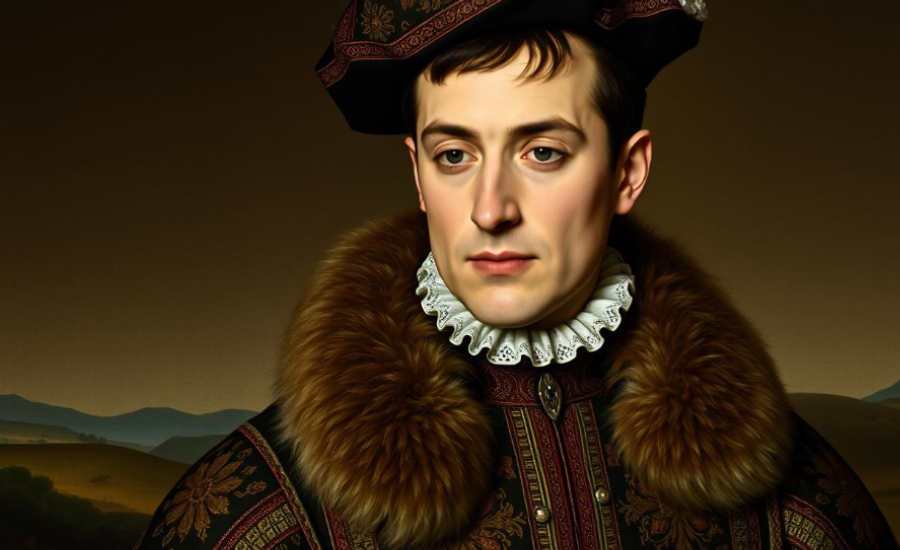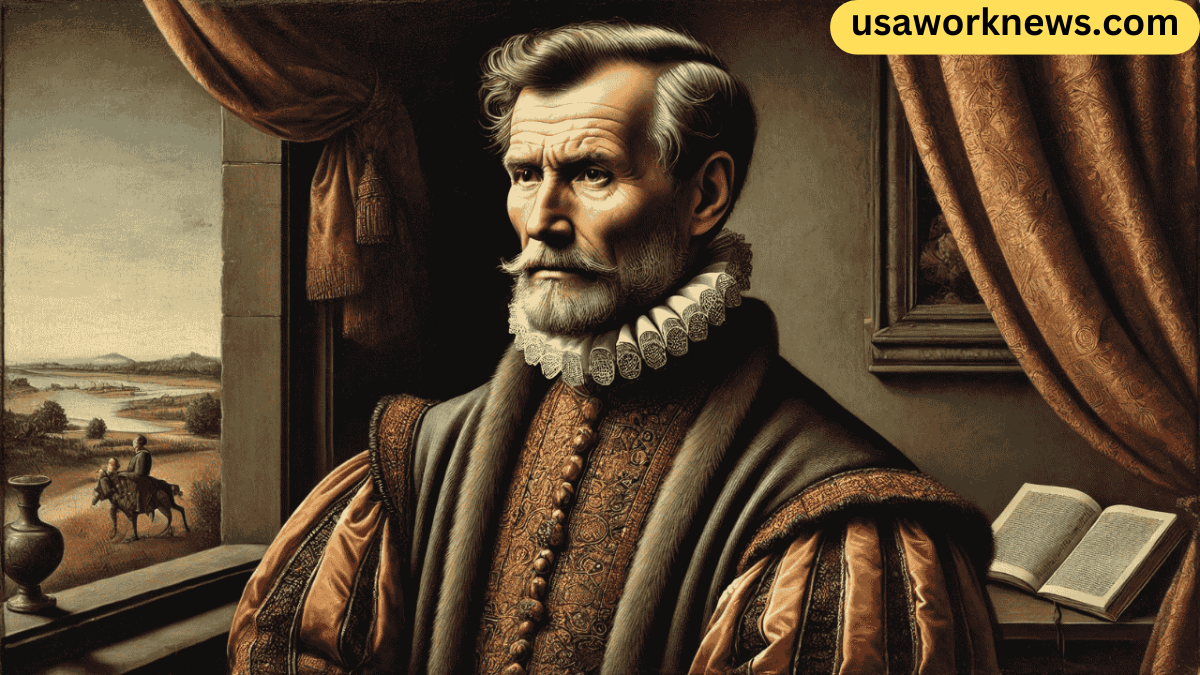1555 portrait servais of Servais is a captivating piece of art that has intrigued art enthusiasts, historians, and collectors for centuries. As an important artifact from the Renaissance era, the portrait not only serves as a glimpse into the artistic practices of the 16th century but also reflects the cultural and political context of the time. In this article, we will explore the fascinating details surrounding the creation, interpretation, and significance of the 1555 portrait of Servais. From the artist behind the work to the symbolism embedded in the portrait, this article will provide a thorough analysis of this historical masterpiece 1555 portrait servais.
Understanding the Context of the 1555 portrait servais

1555 portrait servais Before diving into the specific details of the portrait itself, it is important to understand the historical context in which it was created. The mid-16th century was a period marked by significant changes in both art and society. The Renaissance, with its focus on humanism, realism, and the revival of classical themes, was reaching its peak. Artists were no longer limited to religious subjects; instead, they sought to capture a wide range of human experiences, from portraits of individuals to complex mythological scenes 1555 portrait servais.
The year 1555 was a pivotal moment in European history. Many regions were experiencing political unrest, religious reformations, and the consolidation of power. The rise of powerful monarchies, such as the Habsburg dynasty in Spain and the burgeoning influence of the Catholic Church, played a crucial role in shaping the culture and art of the time 1555 portrait servais.
In this context, portraiture became an essential way for individuals to assert their social status, wealth, and political influence. Portraits were often commissioned by the elite as a means of solidifying their legacy. The 1555 portrait of Servais, which is believed to depict a prominent figure from this period, is a prime example of how portraiture served as a tool for both personal and political expression 1555 portrait servais.
The Artist Behind the 1555 portrait servais
The identity of the artist behind the 1555 portrait of Servais is a subject of ongoing debate among art historians. While the exact name of the artist remains uncertain, there are several theories that point to well-known painters from the period who were known for their skill in portraiture. One of the most frequently suggested artists is the Flemish painter, Hans Holbein the Younger, who was famous for his lifelike portraits and ability to capture the psychological depth of his subjects 1555 portrait servais.
Holbein’s works are renowned for their incredible attention to detail, especially in the depiction of fabrics, textures, and the nuanced expressions of the sitters. His portraits often reveal the wealth, status, and personality of the subjects, and it is likely that the artist behind the 1555 portrait of Servais followed similar principles 1555 portrait servais.
Another possibility is that the artist was part of a growing network of European painters who specialized in portraiture during the Renaissance. The influence of Italian Renaissance painters, particularly Raphael and Titian, had spread across Europe by the 1550s, and many artists began to adopt their techniques in order to create more realistic and naturalistic portraits 1555 portrait servais.
Regardless of the specific artist, the skill evident in the 1555 portrait of Servais reflects the broader artistic trends of the time. The use of oil paints, detailed brushwork, and a focus on realistic proportions and facial expressions were all hallmarks of the Renaissance style that influenced artists across Europe 1555 portrait servais.
Examining the Composition of the 1555 portrait servais
One of the most striking aspects of the 1555 portrait of Servais is its composition. The portrait features the subject in a three-quarter view, a common pose in Renaissance portraiture. This perspective allowed the artist to showcase both the face and the clothing of the subject, offering insight into the fashion and social status of the time. The subject’s gaze is directed slightly off-center, which creates a sense of depth and immediacy, as if the viewer is being invited into the scene 1555 portrait servais.
The background of the portrait is minimalistic, drawing attention to the sitter without any distracting elements. This approach was typical of Renaissance portraits, which often featured simple, neutral backgrounds that allowed the subject to dominate the composition. The subtle use of light and shadow helps to define the figure, creating a lifelike and almost sculptural presence on the canvas 1555 portrait servais.
The attire of the sitter is also a key element of the composition. The clothing is rich and elaborate, indicating the wealth and high social standing of the individual. The textures of the fabric are rendered with meticulous attention to detail, capturing the sheen of silk, the softness of velvet, and the intricate patterns on the garments. These elements not only reflect the fashion of the time but also serve as a visual representation of the sitter’s status 1555 portrait servais.
In addition to the clothing, the use of accessories, such as jewelry or a specific item the subject may be holding, further conveys the individual’s wealth and social position. These details were not just decorative; they were symbols of the subject’s power, influence, and identity in the larger social and political landscape 1555 portrait servais.
The Significance of the 1555 Portrait of Servais
The 1555 portrait of Servais is not only an artistic achievement but also an important historical document. Portraits during this period were often more than just representations of individuals; they were used to convey messages about the sitter’s personality, achievements, and social role. In the case of the 1555 portrait of Servais, it is likely that the image was intended to communicate the subject’s status within the political or social hierarchy 1555 portrait servais.
While it is not certain who Servais was, the name itself is evocative of noble or upper-class European families. Many individuals who commissioned portraits during the Renaissance were part of the merchant, aristocratic, or royal classes. These portraits served as visual propaganda, cementing the sitter’s legacy and showcasing their achievements, whether in war, politics, or business.
The portrait may have also had personal significance to the sitter, serving as a means of immortalizing their image for future generations. In an era when death was seen as an inevitable part of life, the portrait became a way for individuals to preserve their likeness for posterity. It was an attempt to control their legacy, ensuring that they would be remembered long after they had passed.
Beyond personal legacy, the 1555 portrait of Servais may have also been a reflection of the broader social and political context of the time. The Renaissance was marked by the rise of powerful city-states and the consolidation of wealth and power among a select few. Portraiture became a means of asserting dominance in this competitive environment, and the subjects of these portraits were often at the forefront of political and cultural life.
The Symbolism in the 1555 Portrait of Servais
Like many Renaissance portraits, the 1555 portrait of Servais is rich in symbolism. The elements of the composition—such as the subject’s attire, posture, and facial expression—are all carefully chosen to convey specific messages to the viewer.
The choice of clothing, for example, was never arbitrary. The rich fabrics, such as velvet or silk, were symbols of the sitter’s wealth and influence. During the 16th century, only the elite could afford such luxurious materials. The intricate embroidery and use of fine jewelry further emphasized the subject’s high social standing. This was not just a fashion statement; it was a deliberate visual cue to indicate the individual’s power and authority.
The facial expression and posture of the sitter also carry meaning. The slightly turned head and direct gaze could suggest confidence, intellect, or authority, all qualities associated with powerful individuals during the Renaissance. The sitter’s calm demeanor and poised posture may have been intended to project an image of control, stability, and composure—qualities that were highly valued by Renaissance society.
Moreover, the minimal background and lack of distracting elements in the composition suggest a focus on the sitter’s inner character rather than external circumstances. The artist’s choice to strip away extraneous details allowed for a clearer focus on the subject’s face and attire, which were the primary vehicles for conveying meaning.
The Legacy of the 1555 Portrait of Servais
As one of the most important portraits of the Renaissance, the 1555 portrait of Servais continues to captivate scholars and art lovers alike. Its impact on portraiture and the role of art in political and personal expression is profound. The legacy of this painting extends beyond its technical achievement; it serves as a window into a time when art was a powerful tool for shaping social and political narratives.
The 1555 portrait of Servais is also a reflection of the broader trends in European art during the Renaissance. The emphasis on realism, attention to detail, and psychological depth in portraiture became defining characteristics of the era, influencing generations of artists who came after. The techniques developed in the 16th century continue to shape the way artists approach portraiture today.
Conclusion: The Enduring Appeal of the 1555 Portrait of Servais
The 1555 portrait of Servais is more than just a visual representation of an individual. It is a product of its time, offering insight into the cultural, political, and artistic currents of the Renaissance. From its composition and symbolism to its significance in the broader historical context, the portrait remains a remarkable achievement in the history of art.
While the identity of the sitter may never be fully confirmed, the impact of the portrait itself is undeniable. It stands as a testament to the skill of the artist, the sophistication of Renaissance portraiture, and the enduring power of art to communicate complex ideas about identity, power, and legacy.
As art historians continue to study the portrait, its meaning and significance will undoubtedly evolve, adding new layers of interpretation and understanding. The 1555 portrait of Servais will continue to be a source of fascination for generations to come, offering a glimpse into a world that was both similar and vastly different from our own.
